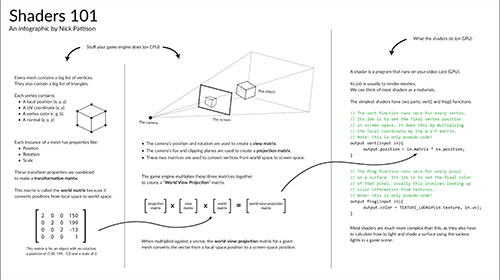Using Journey Maps in Level Design
Students come to my Level Design class expecting to learn a game engine. Some expect the course to be about block-outs, others want it to be about gameplay programming, or the aesthetics of game design, or working with assets and content pipelines. These are all great topics, and it's true that there's a ton of technical ground to cover. And there's quite a bit of built-in program-level goals like game production, best practices, teamwork, communication, etc. After making room for all of these goals, there's sometimes little bandwidth left for teaching actual design, as in: How does a team create and deliver a specific experience?
For creating and communicating a vision for a level's design, we turn to tools like mood-boards, lore-writing, floorplans, and journey maps. Each of these tools provide ways for a team to establish and document their ideas, but journey maps are perhaps the most important. When done well, a journey map not only brings together various aspects of the design into a single document, but they are also intended to be testable, for both usability and desirability.
